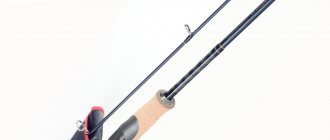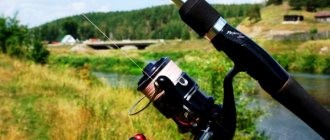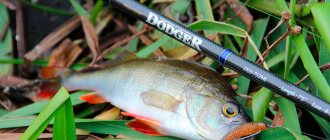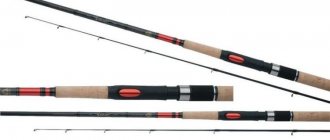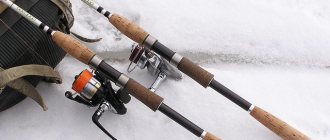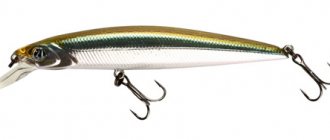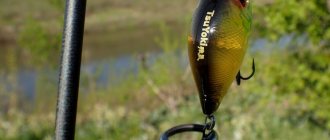What is the best choice of spinning rod? Spinning is deservedly popular among fishing enthusiasts. This fishing tackle can be used to catch any fish - from ruff and perch to pike and burbot. Nevertheless, the size of the catch directly depends on skillfully selected and equipped gear.
It should be noted that the term “spinning” exclusively refers to tackle, rod and fishing technique. Therefore, a float tackle and a donk, equipped on the basis of a spinning rod, cannot be called a spinning rod.
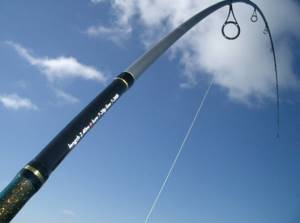
Rod
The main element in spinning tackle.
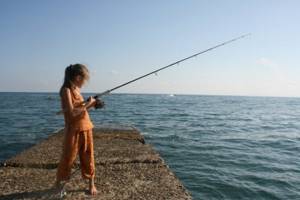
Spinning rod sizes
Choosing the optimal spinning rod length. How to determine it? The minimum length of the form is 1.3, the maximum is 4 m, but there are also larger sizes:
- Which spinning rod to choose when fishing from a boat. The shortest rods are used when fishing from a boat or in limited space, for example, on a shore covered with vegetation.
- Long rods are used when long casting is required.
- A rod size of 2.4-2.7 meters is considered universal. This spinning rod can be used in almost any situation and can be used to throw a spinner over 60 meters.

Spinning line
The fishing line is an important element of spinning tackle; it serves as a connecting link between the bait and the rod. There are three main types of fishing lines used in spinning rods: monofilament, braided fishing line (cords) and fluorocarbon fishing line. Each of these types of fishing line has its own characteristics, advantages and disadvantages.
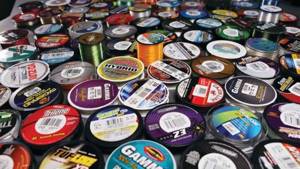
- Monofilaments
are the oldest type of fishing line. Mono lines have a low cost, low visibility in the water, due to their stretchability, they are good at damping fish jerks. The disadvantages of monofilament include low strength and stretchability, due to which they do not provide high sensitivity of the gear. - Braided fishing lines (cords)
do not consist of one fiber, like monofilaments and fluorocarbon fishing lines, but of several fibers woven together. Braided fishing lines are practically inextensible, which ensures full contact with the bait and the highest sensitivity of the gear. Braided fishing lines have high tensile strength, exceeding the strength of all other types of fishing line. With the same diameter, braided fishing line is 3-5 times stronger than monofilament. Braided fishing lines, unlike monofilaments, do not have a memory effect. Without the use of braided lines, it is impossible to imagine such methods of spinning fishing as jig, twitching and jerking. The disadvantages of braided lines are their higher cost, as well as their increased susceptibility to abrasion. - Fluorocarbon lines
have a light refractive index close to that of water, so they are almost completely invisible in water. Another significant advantage of fluorocarbon fishing lines is their high abrasion resistance.
You may be interested in: Where and when is the best time to use fluorocarbon?
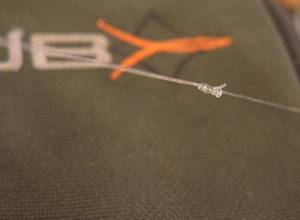
When catching predatory fish that have sharp teeth that can easily cut the fishing line, the fisherman attaches a leash between the main fishing line and the bait. The leash can be made of different materials: metal braided cable, guitar string, fluorocarbon or monofilament. The most common are leashes made of metal braided cable; they can be of different lengths and workmanship; they can be bought at any fishing store. Popular among spinning anglers are leashes made of guitar string or other steel wire with a diameter of 0.18 to 0.40 mm. Many anglers use a piece of fluorocarbon fishing line with a diameter of 0.35 - 0.7 mm for the leash.
Rod material
When making a fishing rod, 3 types of materials are used:
Composite materials – fiberglass, fiberglass. They are durable, have the lowest cost, and are resistant to mechanical stress. However, the rods have increased weight and reduced sensitivity.
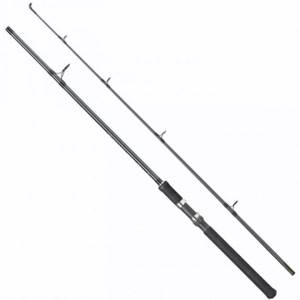
Polymer carbon fiber materials based on carbon fiber (carbon, graphite). Such modern fishing rods have outstanding user qualities, but are very sensitive to mechanical stress and can even break if hit by a branch.
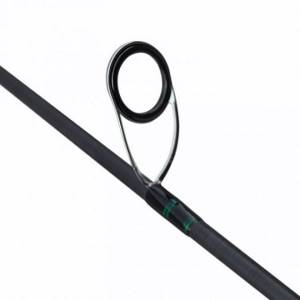
For aesthetes, fishing rods are made in small series from unusual materials, including bamboo.

Types of tuning
- ultra-fast – when casting and other loads, only the thinnest part of the rod bends;
- fast – only the upper 25% of the rod length is deformed;
- medium-fast – the upper 33% of the rod length is deformed;
- medium – the upper 50% of the rod length is deformed;
- slow - the entire rod is deformed under load. It performs well when casting sailing bait and landing large fish.
Universal spinning rod: myth or reality?
A detailed, well-illustrated review of the Norstream Flagman FLS3-762ML . Word to its author (the text is given in the author's edition).
Preparing for the 2021 liquid water season, I set out to find a universal “workhorse”, up to 20 grams, so that it would be suitable for different baits and fishing conditions, and also inexpensive, so that I wouldn’t be too sorry if it breaks (which is quite likely, knowing my characteristic feature is to attract stupid situations


But, nevertheless, after monitoring phishingsib and other fishing forums, I finally settled on Norstream, because... According to reviews, they have some of the best fishing rods in the budget segment.
So... Universal spinning rod Flagman New:
model FLS3-762ML; length 229 cm; test for baits 4-18 g; cord test 4-8 lb; weight 133 g.
About the form and accessories
Continuing the trend of modern fishing rods, the Flagman blank does not have a pronounced varnish. Only part of the butt and the guide ring bands are varnished.

By the way, despite the fact that the spinning rod is from the budget category, the rings are installed carefully, and the varnish on the ring bands is moderate. The rings themselves are without any identification marks; upon inspection, no defects were revealed. The sic inserts were installed without distortion, and after the season there were no problems with the rings.

The tulip on the rod is standard, with an anti-wrap frame, installed neatly and evenly.

A hookkeeper is installed just above the reel seat - an extremely useful thing!

The reel seat itself has an upper nut, which is combined with an EVA holder, as they say - convenient and practical. The installation quality of the reel seat itself, as well as all the accessories, is at a decent level, no backlash or any parasitic beats were noticed. The reargrip is quite large, it is convenient to cast with two hands, from the same eva. The tank is metal, apparently for balance) However, the balance is quite comfortable; with the RiobiExia 3000 worker-peasant reel, you don’t feel tired at all when fishing.

In general, the blank has a fast action and is moderately elastic, which has a good effect on throwing characteristics, as well as on hooking and landing fish. When casting, the entire blank works, transferring energy and acceleration to the bait.

The joint between the butt and the whip is tight, without play, and does not become loose during fishing.

In static conditions, the blank works as a single unit, the load is distributed evenly on both the whip and the butt.
About fishing
According to tradition, the opening of the season began with a light jig and lead rigs. The blank captures everything that happens with the bait at the bottom well. When placing a jig rig with a load within the test, the form does not “fail” and clearly follows the entire bottom topography. I don’t recommend exceeding the upper test; with a 16 g jig and a 7 cm vibrating tail, casting and retrieving already loads the form, and you feel like you don’t need anything heavier! With lead rigs, fishing is very comfortable, also within the test limits.

There are no complaints when working with wobblers. Slightly persistent minnows can be comfortably twitched. And for night pike perch at the beginning of summer, using small minnow wobblers up to 110 mm is absolutely beautiful;)
It cuts through the form of the same pike-perch very confidently, and when landing fish it hooks up perfectly well.
And the rod also copes well with small perches.

As a result, I can say that Flagman is quite versatile, works at a good level with all lead rigs and jigs, works well with small wobblers, and with a variety of “hardware” (rotating and oscillating spoons) within the test, fishing will also be comfortable.
This spinning rod can be safely recommended to both beginners and experienced fishermen as a working tool for “every day”. It will take its rightful place in everyone’s arsenal, and will not be bored in the corner without fishing.

Source: Glazacheva, FishingSib
Share
Rod test (casting)
This parameter determines the most favorable weight of the baits used.
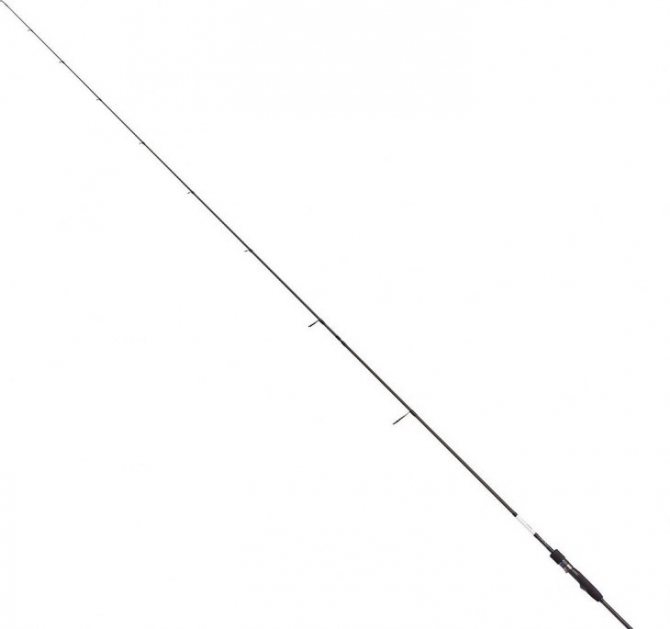
Casting indicates the weight range of the bait from the minimum, which allows you to feel it when casting and retrieving, to the maximum permissible, which does not lead to destruction of the fishing rod. If the permissible weight is exceeded, breakage of the form is inevitable.
The stated test parameters of even well-known manufacturers should be treated with skepticism. Over time, the boundaries of the classification of spinning rods by casting change in a decreasing direction.
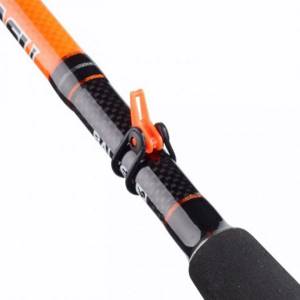
Classification (in grams) of spinning rods according to test:
- up to 7 – ultra-light, for small baits;
- 7 – 12 – light, shallow depths and moderate current;
- 12 – 28 – average, used most often;
- 28 - 40 - heavy, used when fishing at significant depths and current speeds significantly exceeding the average value;
- over 40 grams – super heavy, when catching large specimens in difficult conditions.
Usually a spinning casting of 3 - 20 g is used, and on large deep reservoirs - from 7 to 28 g, in rare cases up to 40 g.
Note!
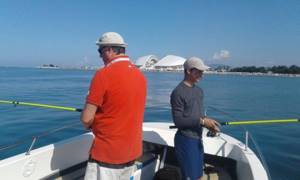
Fishing with a nipple - installation of gear, bait, tips and tricks from the pros! (120 photos + video)- Jig equipment - assembly and installation of equipment. Types of equipment and tips for use for beginners (90 photos)

Types of wobblers - tips and secrets of fishing with bait for beginners. Fishing techniques and methods of catching fish (110 photos and videos)
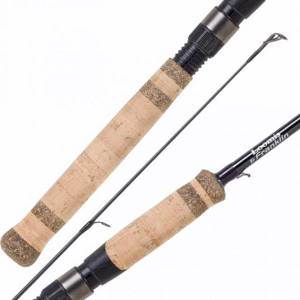
Build
The action of a spinning rod is a characteristic that shows how flexible a spinning rod is and how it reacts to a throw or hook. Along with the test, the most important characteristic of the spinning rod blank, which determines the range, accuracy and sensitivity when playing fish. The action characterizes the type of bending of the rod under load. The action depends not only on the thickness and material of the rod's whip, but also on the location of the rings on it. A larger number of rings gives a smoother bend of the rod blank, but creates more drag on the line due to friction against the rings.
- EF (Extra Fast) – very fast. Almost immediately the hook is transferred to the fishing line. Only the top quarter of the rod bends.
- F (Fast) – fast. The upper third of the rod bends.
- M (Moderate) – medium. Half of the rod bends.
- S (Slow) – slow, parabolic, “parabolic”. The rod bends along its entire length.
The “fast” rod works in a particularly sharp manner when casting - the time between the swing and the flight of the bait is minimal. “Slow” - at the first stage it bends strongly, and when the handle is almost in front of you during casting, the whip itself seems to “shoot” the bait. With a faster rod it is easier to make an accurate cast, but a slower one, all other things being equal, has a longer cast. With a “fast” action the hooking becomes more reliable. The “fast” system allows for forced (power) fishing; it is much more convenient for them to work where the technique of retrieving with sharp accelerations of the bait is used. For example, fishing with poppers or wobblers. The main advantages of the slow action are better work over a wider range and very “soft” fishing. It is highly valued when the object of the hunt has weak lips that are easily torn when using “fast” ones. For example, perch fishing.
Passing rings
Allows you to distribute the load equally throughout the rod. Some rods have the line inside the whip, creating a perfect balance.
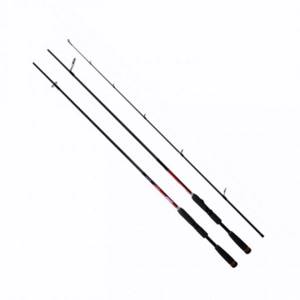
Quality criteria for pass rings:
- wear resistance;
- reduced coefficient of friction;
- high thermal conductivity;
- appropriate placement on the rod.
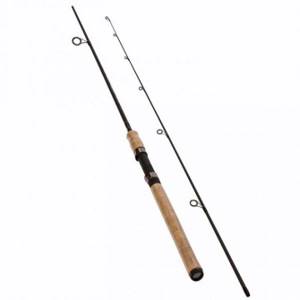
Spinning rod handle
Made from cork or a rubber-like plastic made from ethylene and vinyl acetate.
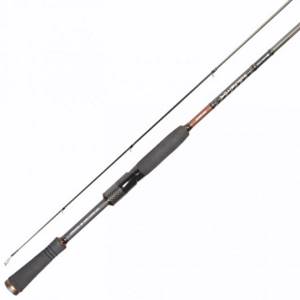
Natural cork, as a material for making spinning rod handles, even in prestigious models, has practically outlived its usefulness and is being used less and less by manufacturers.
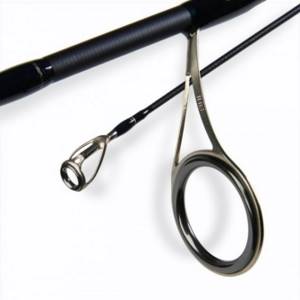
Types of spinning reels
Due to their practicality and convenience, spinning reels are widespread and widely used.
Note!
- Fishing with a retractable leash: tips for beginners and fishing secrets from professionals (90 photos)
- Wobblers for trolling - a step-by-step description of fishing techniques for beginners and the best models of 2021 (115 photos)
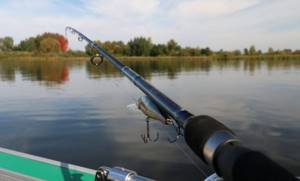
Which spinning system to choose: step-by-step description for beginners and tips on how to choose the right system (105 photos + video)
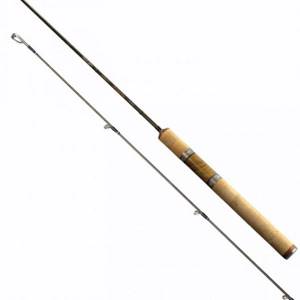
Inertial reels with a drum that rotates when casting have been almost never used lately. Their former popularity, due to reliability and simplicity, is a thing of the past.
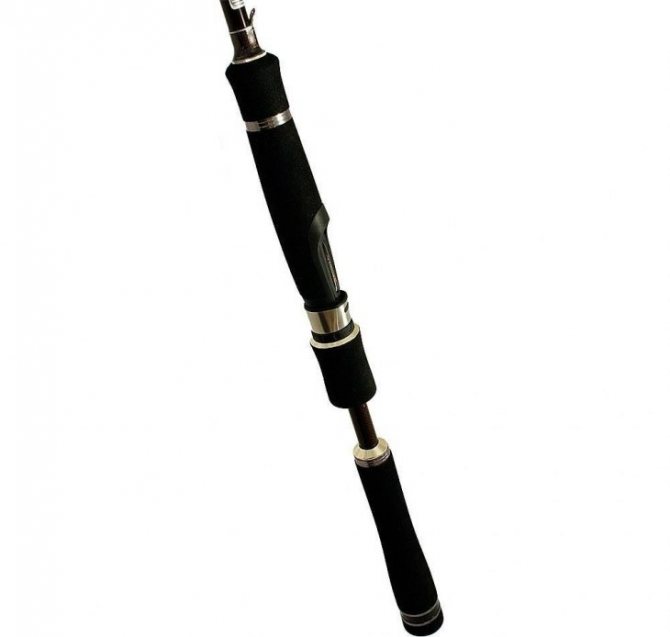
The tendency for the line to tangle, the difficult casting technique and the inability to use light baits forced us to switch to other reel designs.

Multiplier reels, which are a type of inertial reels, differ from them by the presence of a gearbox, which allows several times to increase the number of revolutions of the spool relative to the reel handle.
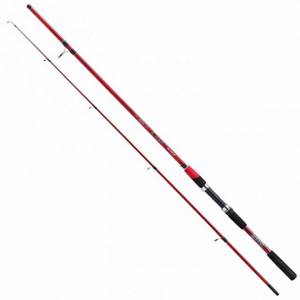
This type of reel can be used in any type of spinning fishing, with the exception of ultralight.
Spinning reels
A spinning reel is one of the most important and perhaps the most expensive element of spinning equipment. There are three main types of spinning reels: spinning reels, spinning reels, and baitcasting reels.
Inertia coils
The first spinning reels were the so-called inertial reels. Inertial reels were popular among Soviet fishermen: “Nevskaya-100”, “Nevskaya-150” and “Kyiv”. Nowadays, inertial coils have given way to other types of coils.
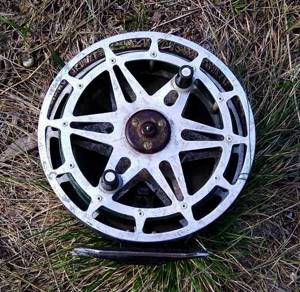
Inertial coils are simple to design. They consist of: a drum for winding the fishing line, a friction brake and a leg for attaching the reel to the fishing rod.
An inertial reel is well suited for fishing when heavy bait is used and long distance casting is not required. The advantages of inertial coils include low cost compared to other types of coils and simplicity of design, which ensures high reliability of such coils.
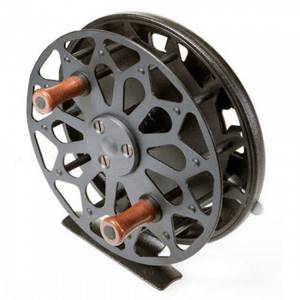
For all their advantages, inertial reels require a certain amount of experience and dexterity from the angler to cast bait. The inertia of the reel needs to be slowed down and stopped at the end of the cast, otherwise you will end up with a “beard” of fishing line that will take a long time to untangle.
It is precisely because of the difficulty with casting and the frequent formation of “beards” that inertial reels have lost popularity among anglers to more modern, inertia-free reels.
Spinning reels
The spinning reel is the most popular type of spinning reel among domestic fishermen. The appearance of a spinning reel is known to every fisherman; because of their appearance, such reels are often called “meat grinders” by fishermen.
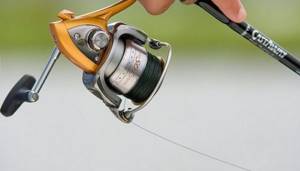
A spinning reel consists of a spool, a line handle with a roller, a rotating rotor, a body containing the reel mechanism, a handle and a leg with which the reel is attached to the spinning reel seat. Inertia-free reels are equipped with a front or rear friction brake.
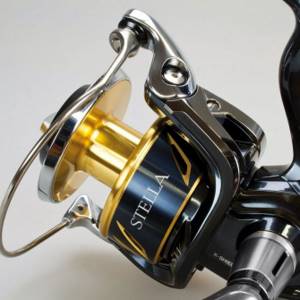
Inertialess reels are easy to use, universal in terms of fishing method, thanks to a large number of models, they provide the fisherman with the opportunity to choose a reel that is suitable for fishing conditions and budget.
It should be noted that a high-quality spinning reel costs a lot and requires careful treatment and care.
Multiplier reel for spinning rod
Multiplier reels are still not very common among domestic fishermen, although they are very popular abroad. The popularity of these reels is growing every year and more and more anglers are no longer avoiding them. Many spinning anglers, who pick them up for the first time and make a few casts, begin to understand that even a novice angler can handle such a reel.
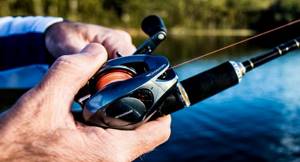
Multiplier reels combine the advantages of both inertial and inertialess reels, but at the same time have a more complex design.
It is not recommended to install a multiplier reel on a regular spinning rod; you should purchase a casting spinning rod specifically designed for fishing with a multiplier reel; such a spinning rod has better balance, an appropriate handle length and a larger number of rings, and a reel seat specifically designed for the multiplier.

Multiplier reels have high power, are reliable, easy to use, and provide high sensitivity of the gear during the fishing process. At the same time, multiplier reels require certain equipment and experience in casting bait, they require adjustment of the braking system to the fishing conditions and the bait used, and have a higher cost compared to other types of reels.
Tips for inexperienced anglers
Which spinning rod should an inexperienced beginner choose? Preferably a plug rod with a spinning reel and the following characteristics:
- minimum length 2.4, maximum 2.7 meters;
- test form - from 3 to 20 g;
- the system is fast, medium-fast is also possible.
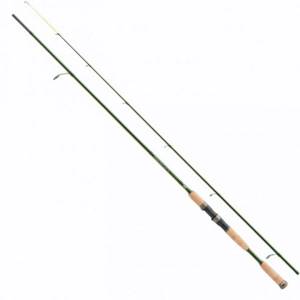
The rod material is low-modulus carbon fiber, composite is also acceptable.
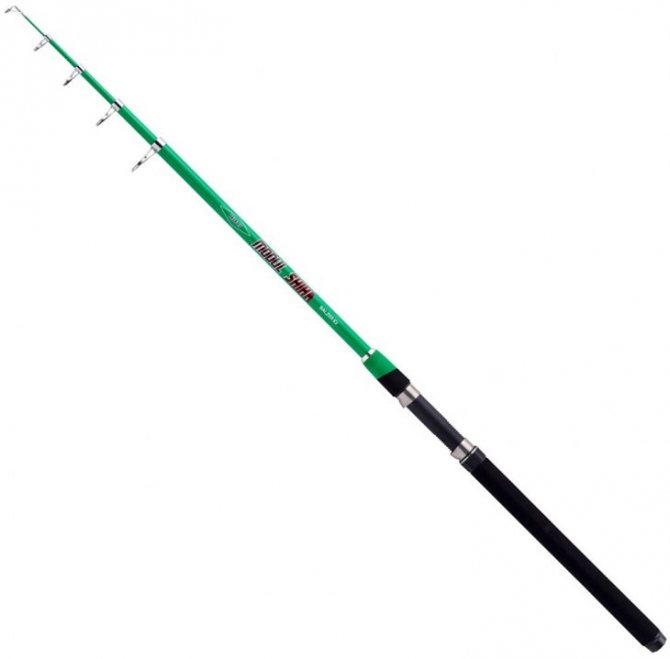
When purchasing tackle, novice spinning anglers should be guided by the following:
To eliminate the risk of purchasing a defective fishing rod, you should inspect it with great care;
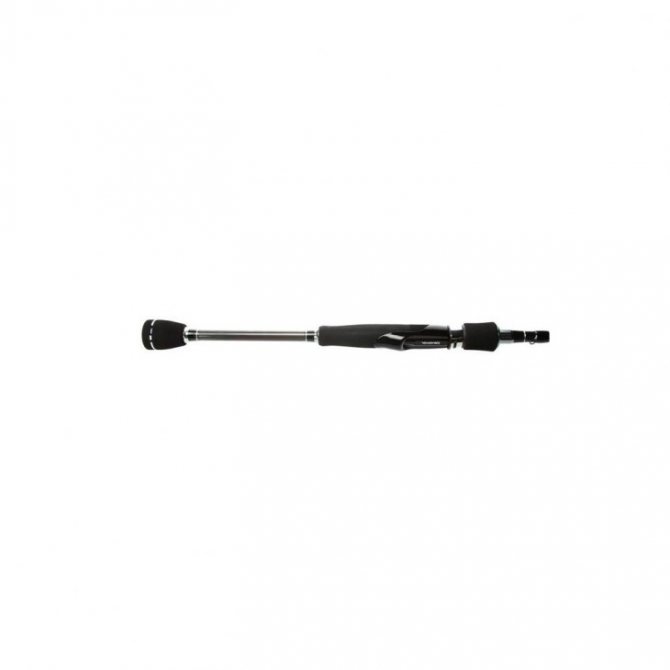
During inspection, defects such as scratches, damage to the varnish coating, chipping of the handle, and defects in the guide rings may be revealed.
The reel seat should move without difficulty, and the guide rings should be located one after another strictly in a straight line.
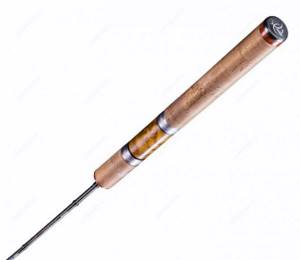
The connection of the parts of the rod should occur without difficulty, but without play or gaps, tightly, and should not be accompanied by crunching or other sounds.
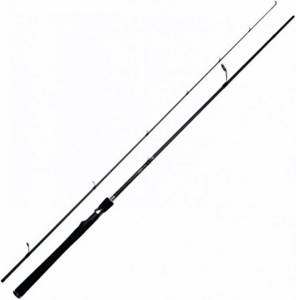
The choice of a spinning rod manufacturer depends on the financial capabilities of the spinner, the intended type of fishing, his preferences and skills.
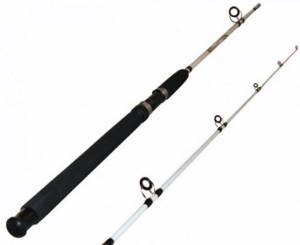
Differences between a spinning rod and a float rod.
- The main structural difference between a spinning rod and a float fishing rod is the absence of a float and sinker in the former. Their function is combined with baits.
- The spinning rod has guide rings and a reel for fishing line. A regular fishing rod does not necessarily have them.
- A spinning rod is more flexible, durable, and no more than three meters long. The retractable arms of the float rod can reach six meters in length.
- The weight of a spinning rod is much greater than that of a float rod.
- A fishing rod with a float is used to catch any type of fish, both peaceful aquatic inhabitants and their predatory relatives. Spinning is preferably used when hunting predators.
- Spinning fishermen use exclusively artificial baits.
- If the first prototype of a float rod was used by ancient people, spinning is an invention of modern people. The first version appeared only at the end of the nineteenth century.
- Fishing with a fishing rod and float is a passive activity. With a spinning rod you are constantly on the move.
Photo tips on how to choose a spinning rod
Read here Fluorocarbon leash - tips on choosing, application experience and how to make it yourself (110 photos + video)
Help the project, share on social networks 

0
